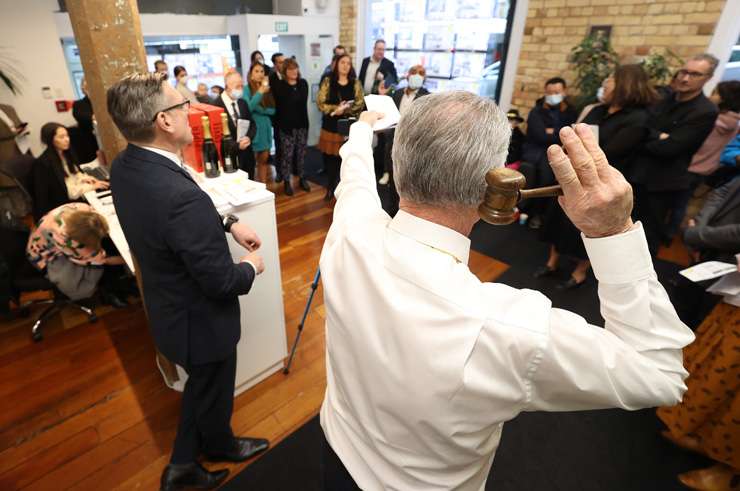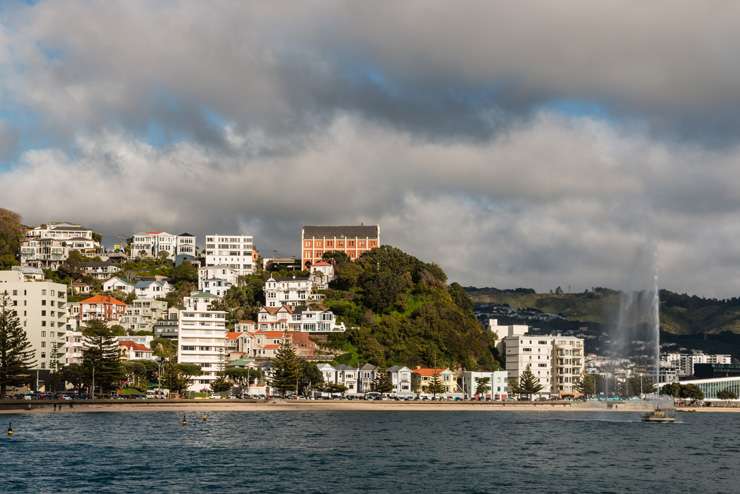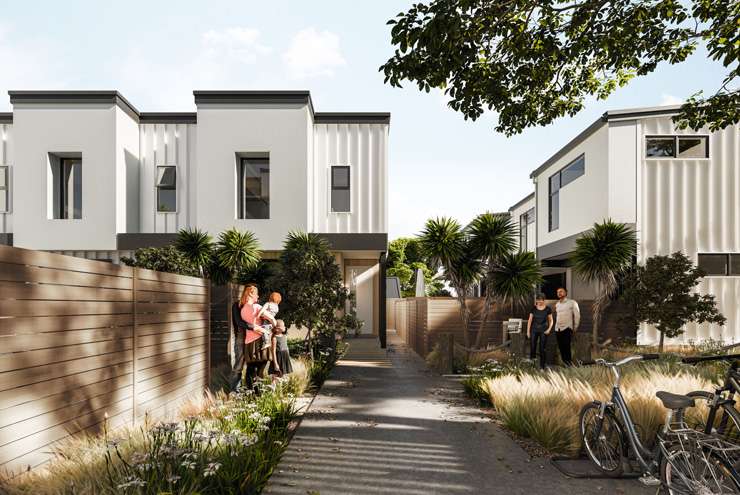The housing market over the next few months is the time for people to make their move rather than holding out in case prices drop further, market experts have told OneRoof.
Price falls are thought to be getting close to reaching their low, and with interest rates likely to rise again some who wait might not get the finance they need to buy the home they want.
Paul Ejamme, financial advisor and company director for Finsol, says waiting is not a good idea.
“If you are buying your first home, you should be buying right now because things are going to get tighter and tighter in people being eligible to borrow to the point there might be a halt to lending.”
Start your property search
Ejamme says if the OCR goes up to 4%, the test rates banks lend on will be around 9% and first home buyers won’t be able to borrow very much.
“What we've seen is a lot of people are making offers trying to lowball and they are just getting declined, declined and losing out even though they've got a good decent chunk pre-approved, because there's a perception from the market everyone should be getting a bargain right now.”
Even first home buyers with a good combined income of $150,000 and no debts are getting knocked back because the mortgage test rates have gone up, he says.
“Every single time their pre-approval expires, they get impacted because banks have to assess the new lending on the test rate.”
Miles Workman, senior economist for ANZ, says the bank is forecasting a 10 to 15% decline peak-to- trough in house prices and current data shows that’s almost two thirds through.
Anecdotally, the market is beginning to pick up but an employment shock is one thing that would derail the market and lead to a significant contraction.

Buyers in action at a Ray White auction in central Auckland last month. Photo / Fiona Goodall
The labour market is exceptionally strong, though, with wages growing fast which is acting as a significant offset to rising interest rates, he says.
However, the Reserve Bank has a “massive” CPI inflation problem. While the ANZ is forecasting the OCR going to 4% from its current 3%, the strong wage growth could mean it goes higher still.
“If it looks like green shoots are emerging in the housing market, that very well could be an early indication that OCR hikes to date are not delivering the required traction the Reserve Bank needs and therefore they could end up responding to that with a higher than otherwise OCR - meaning that green shoots in the housing market may not be very long lived, at least in the near term.”
Murray Smith, auctioneer for Barfoot & Thompson says buyers often worry so much about getting a house for a cheaper price they forget they are looking for a home that suits them.
“What I'm talking about is buying that house that you would pay $1m for and hoping you can buy it in a month’s time for $950,000 - they are going to end up missing out on something they really wanted.”
Smith says when markets sit in a lower price range, as they are now, they don’t tend to stay there long and there will probably be a lot more activity after Christmas.
While FOMO (Fear of Missing Out) has faded, he wouldn’t be surprised to see it back next year, warning prices can quickly escalate.
Reports usually say the market doubles in price every 10 years but after analysing some properties held for 50 years Smith thinks prices double every seven or so years.
One property in Epsom, in the grammar zone, had been bought in 1972 for $24,000 and recently sold for $2.75m, and another was bought in 1968 for $8000 and sold in 2018 for $780,000.
His point is people searching for the bottom of the market – which he says even experts can’t find – can miss out on some real chances and maybe the home they dreamed of.

Wellington has suffered the country’s steepest house price falls this year. Photo / Getty Images
He remembers buyers in the early 1990s waiting to see where the market would go but says the market moved ahead faster than they could react and that could happen again now.
“If they pfaff around now, they're going to be buying themselves a house that isn't as good as they had planned on buying.”
People who want to trade up should also make their move while the price gap between properties is smaller.
Smith says someone selling a house now for $1m and buying the next one for $1.5m is looking at a $500,000 difference - but if the market “goes crazy” and their $1m house turns into a $2m house, the $1.5m house would turn into a $3m house.
“That means your changeover cost has gone from $500,000 to $1m so it's more expensive if the prices are higher. That’s the cost of waiting so if you can trade up now it’s a great time to trade up.”
In Wellington, Bayleys regional general manager, Grant Henderson, says listings have increased so much people might be able to find what they want.
“This time last year the choice was so limited they compromised on what they were going to own.
“Right now, you can say ‘well, I want to be in that school zone, I want to be on that public transport route, I want to be there’ and you can probably get it now because there’s so much choice.”
This time last year there were about 360 properties on the market in Wellington City – now there are around 900 properties, and across the Wellington region, from the southern Wairarapa to Otaki, the number of properties has increased from about 1170 to around 2600.

An artist's impression of town houses for sale on Mana Esplanade, in Paremata, Porirua. Photo / Supplied
Listings are up because the Government has made it so hard to be a landlord and are selling up, and also because some people have moved out of the region and the country, Henderson says.
Buyers shouldn’t worry too much about prices falling a bit more if they are buying for the long-term, he says.
“I think every single one of those buyer profiles right now has an opportunity to take advantage of the market.
“The Government signalled first home buyers can buy Wellington new builds up to $925,000 and still receive the grants, and existing builds at $750,000, so that means you're open to Tawa, Porirua, Kapiti Coast, Upper Hutt.
“If you find the house that fits your needs and you can afford it you should buy because once there is competition you'll be back into that fighting.”
Henderson says two-bedroom homes in the Marina Development n Paremata, listed from $889,000-plus, are a great example of a new type of property perfect for people to get onto the property ladder because they have dual ensuite typology which provides a co-ownership buyer profile.
Family members or friends could pool their resources and buy together, he says.
"KiwiBank is pushing this type of buyer and lending profile heavily right now.”
James Wilson, head of Valuation for Valocity, OneRoof’s data partner, says would-be buyers wanting to purchase during the spring months should redo or update their budgets to make sure they have taken recent cost of living increases into account, saying with inflation still high there’s likely to be further interest rate rises.
People should also research the running cost of their potential home as insurance costs may rise in some areas due to recent weather events and home maintenance is costing more due to a shortage of tradespeople.
First home buyers should check out whether they qualify for any Government programmes, such as the Kāinga Ora First Home Loan, and also check out how their KiwiSaver is performing because this year’s drop in sharemarkets may mean they have less available for their deposit.

Valocity head of valuations James Wilson advises buyers to update their budgets. Photo / Fiona Goodall
Kelvin Davison, CoreLogic’s chief housing economist, says Spring usually brings a lift in listings and sales activity but doesn’t affect price much.
The key is to buy and sell in the same market.
“In a downturn you might sell your property for less than what you thought six months ago but you might get an absolute steal on the next property so you have saved money.”
There’s not a lot of sense waiting for prices to fall further if you miss out on a house you like, he says.
He, too, thinks house price falls are coming towards their end and says first home buyers should be mindful of that but doesn’t see a reason to panic, saying during the Global Financial Crisis prices dropped then reached a floor and stayed there for a while.
“Prices fell, they went flat and then they rose again - that whole bathtub shape took five years.”
That means there’s arguably no major rush if people are waiting because the time is not quite right for them, he says.
“The market could be flat for a couple of years – now that’s a could be, I mean, who knows? But the GFC tells you that might happen.”
















































































